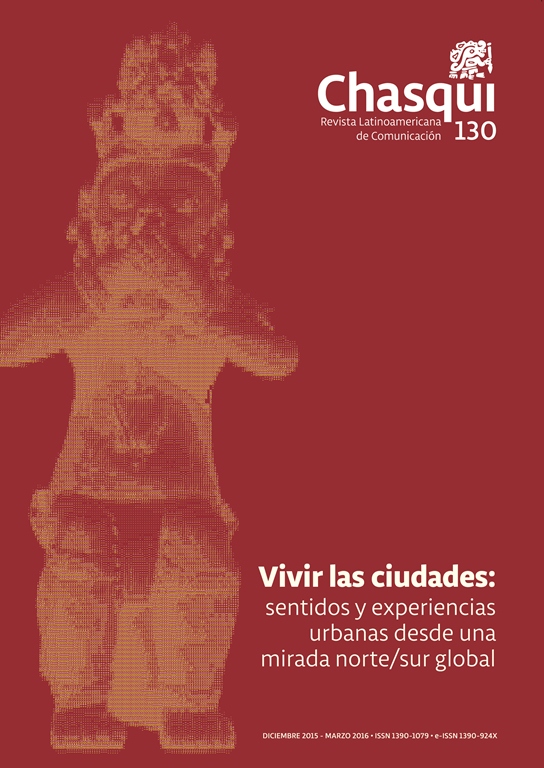Media, spectacle and the grotesque
DOI:
https://doi.org/10.16921/chasqui.v0i130.2614Keywords:
communication, parody, ridiculous, aesthetics, TV, audienceAbstract
We are interested here in the antithetical function of the grotesque against classical representation, which has given rise to the forms of dislocation and dispersion effects being related to the carnivalesque or burlesque narrative, not only in literature, but also in the cinema, television, and sometimes, in one’s own lived experience. This is possible because, from the seventeenth century on, the “grotesque” noun was gradually transformed into an adjective which found place in the semantic field of ridiculous, caricatural or parodic. Today, the grotesque is the aesthetic strategy for attracting peripheral publics on third-world countries television. With this resource, there were built national television networks even now powerful in terms of audience.References
Álvares, J. T. (2006). Gestão do poder diluído. Lisboa: Edições Colibri/Instituto Politécnico de Lisboa.
Bakhtin, M. (1987). A Cultura popular na Idade Média e no Renascimento. O contexto de François Rabelais. São Paulo: Hucitec Editora/UNB, 1987.
Baudrillard, J. (2004). Carnaval et cannibale ou le jeu de l´antagonisme mondial. Paris: Cahiers de L’Herne.
Calabrese, O. (1999) La era neobarroca. Madrid: Cátedra.
Heidegger, M. (1967). Carta sobre o Humanismo. Rio de Janeiro: Tempo Brasileiro.
Morel, P. (2001). Les Grotesques. Les figures de l’imaginaire dans la peinture italienne de la fin de la Renaissance. Paris: Flammarion.
Sodré, M. & Paiva, R. (2002). O Império do Grotesco. Rio de Janeiro: Mauad.
Downloads
Published
22-06-2016
Issue
Section
Tribuna
License
- Authors retain copyright and grant the journal right of first publication with the work simultaneously licensed under a Creative Commons Attribution-NoDerivs License (CC BY-ND) that allows others to share the work with an acknowledgement of the work's authorship and initial publication in this journal.
- Authors are able to enter into separate, additional contractual arrangements for the non-exclusive distribution of the journal's published version of the work (e.g., post it to an institutional repository or publish it in a book), with an acknowledgement of its initial publication in this journal.
- Authors are permitted and encouraged to post their work online.

